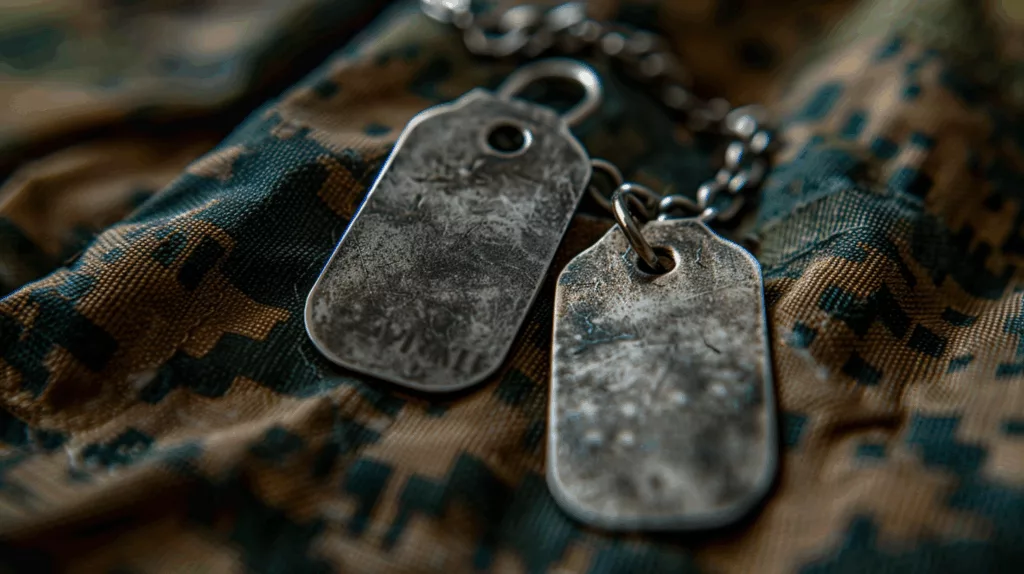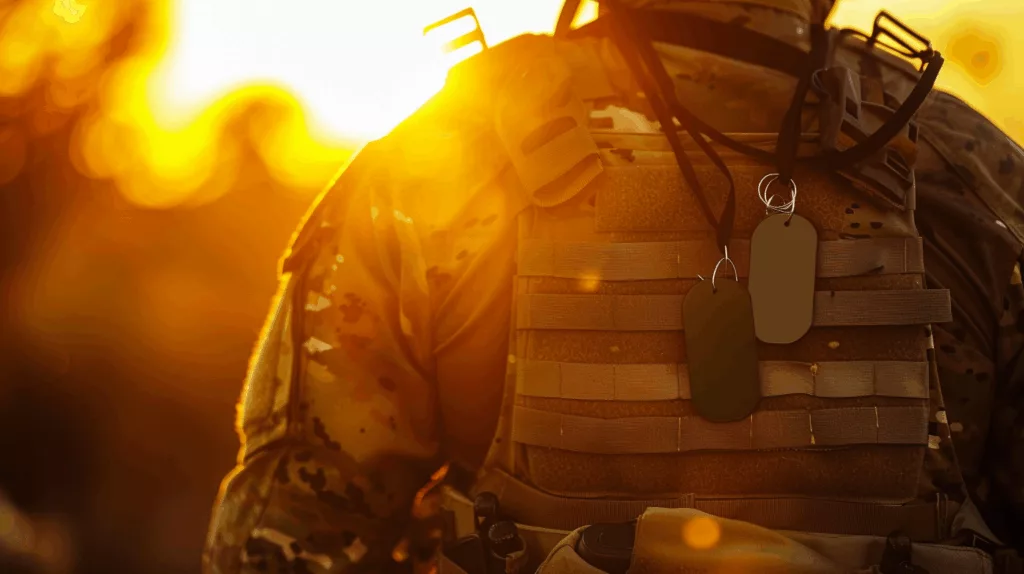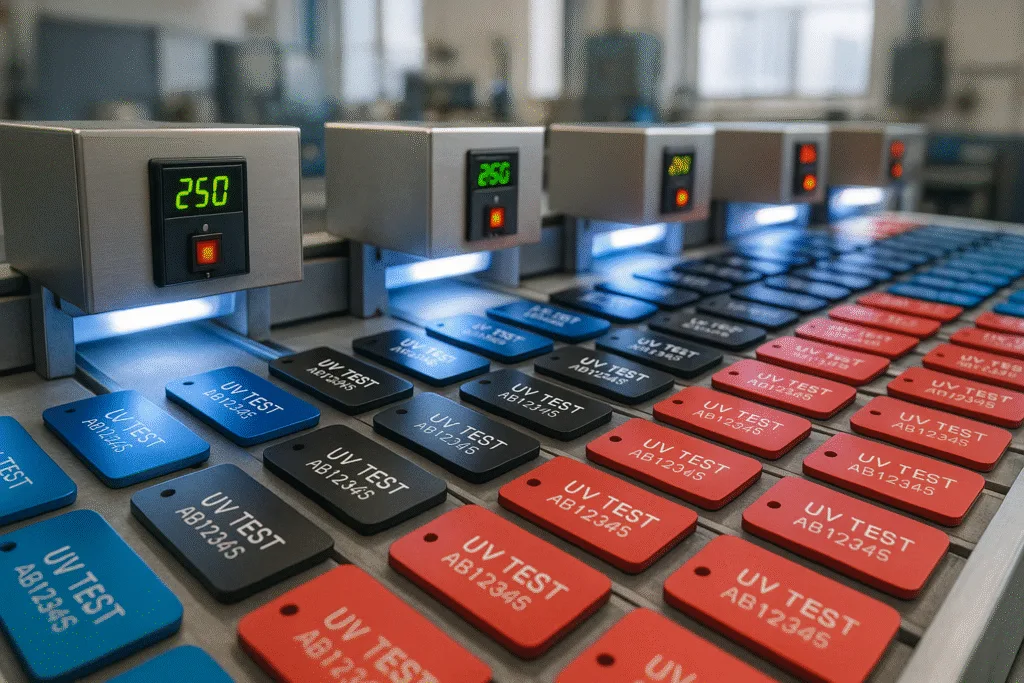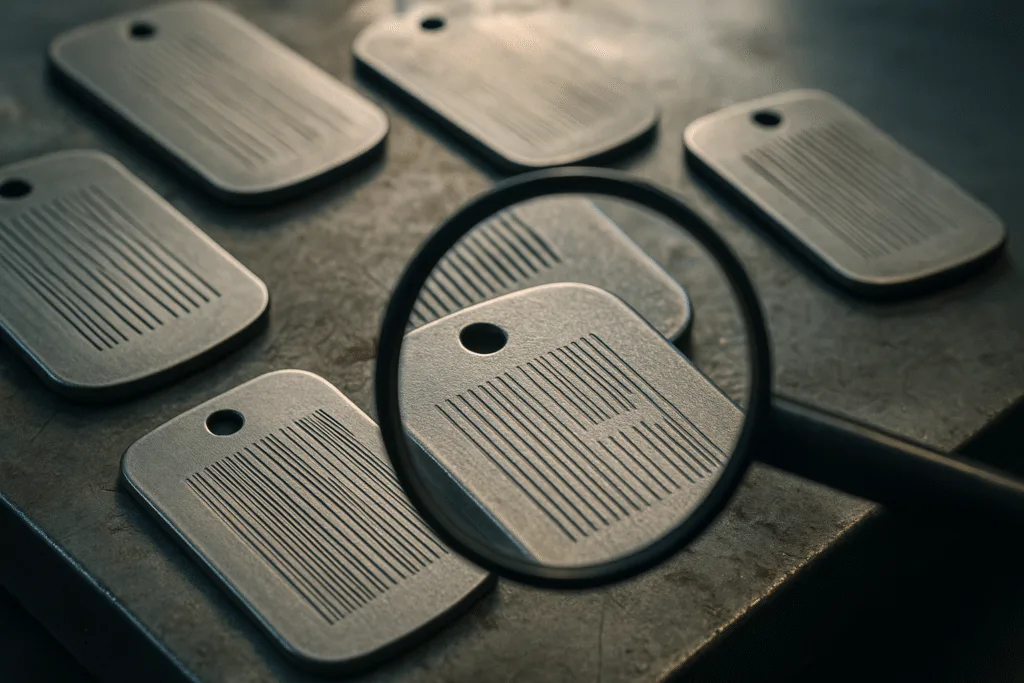In the heart of military identification lies one small but powerful object — the dog tag. Known for its rugged look and unmistakable presence, the dog tag serves as a critical component of a U.S. soldier’s gear. Whether on the battlefield or in training, it carries essential information that can save lives or provide closure.
As a leading metal label manufacturer, UCtag provides OEM/ODM, customization and wholesale services for military-grade identification tags, including dog tags that meet U.S. military specifications. Let’s dive into the meaning, format, and historical significance of this iconic identifier.
The Purpose of Military Dog Tags
Dog tags serve a straightforward but vital purpose: identification. Each tag is a durable, corrosion-resistant label worn around the neck to ensure soldiers can be quickly and accurately identified in any circumstance — especially during combat or emergencies. They are also used for medical and administrative purposes within the armed forces.
What Information Is on a US Army Dog Tag?
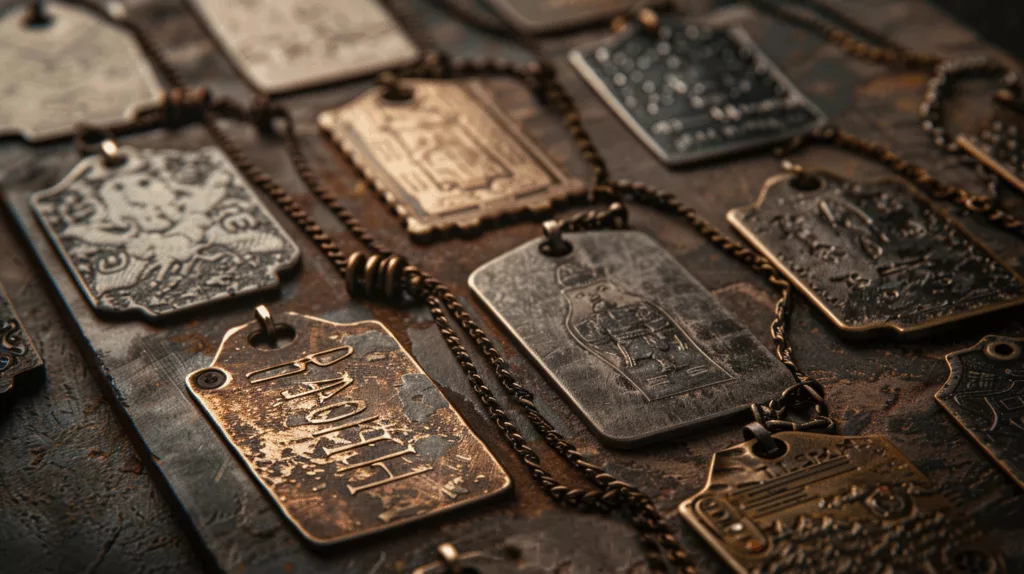
US military dog tags follow a standardized format designed to convey critical data quickly. A typical tag includes:
- Service Member’s Name
- Social Security Number (or DoD ID)
- Blood Type
- Religious Preference (optional)
- Branch of Service
Each piece of information is presented in a compact, easy-to-read manner. Here’s a common military dog tag format:
DOE JOHN A
123-45-6789
O POS
CATHOLIC
US ARMYThis format ensures that medical personnel or commanding officers can act swiftly during combat or evacuation situations.
Why Do Soldiers Wear Two Dog Tags?
A common question is: Why two dog tags? The dual-tag system has a profound purpose:
- One tag remains with the body in the unfortunate event of a fatality.
- The other is collected for official records and notification purposes.
This redundancy ensures that the identity of a fallen soldier is never lost — a deeply respected tradition of military accountability.
Historical Evolution of Army ID Tags
Dog tags have evolved significantly since their unofficial beginnings in the Civil War. Initially, soldiers improvised identifiers with handwritten notes or engraved coins. The U.S. Army officially adopted identification tags in 1917 during World War I.
By World War II, the iconic oval shape with embossed details became standard. Over time, the material improved from aluminum to stainless steel, resistant to weather and wear. In the digital age, some forces have experimented with smart tags and QR codes, although traditional formats remain in active use.
Modern-Day Use and Variations
Today’s dog tags may vary slightly between branches (Army, Navy, Marines, Air Force), but the core information remains consistent. Many soldiers personalize secondary tags with emergency contact numbers or motivational inscriptions — especially when deployed.
UCtag, with its precision manufacturing and customizable offerings, ensures that every dog tag not only meets regulation standards but can be tailored to mission-specific needs or personal preferences.
FAQ
Why are dog tags called ‘dog tags’?
The term “dog tag” originates from their resemblance to pet ID tags, especially after WWII when public awareness of military identification increased.
Can civilians own military-style dog tags?
Yes, customized dog tags are popular among civilians for fashion, medical alerts, and emergency IDs. However, impersonating a military member is illegal.
Are dog tags still used in the digital age?
Yes. Despite advancements in digital tracking, physical dog tags remain essential for immediate, on-the-ground identification.
Final Thoughts
Military dog tags are more than just metal pendants — they are symbols of identity, honor, and sacrifice. From the trenches of World War I to modern battlefields, these simple tags carry the weight of duty and remembrance.
Whether you’re a collector, historian, or active service member, understanding the depth behind dog tags adds perspective to their enduring significance. And with UCtag’s trusted craftsmanship and OEM/ODM services, your dog tag needs — whether functional or commemorative — are in expert hands.
Related reading

